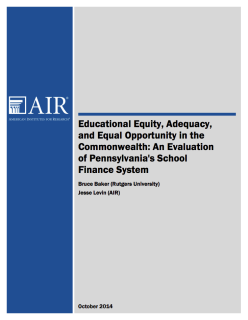The Politics of Educational Change: What Can We Learn from the School Consolidation Acts of 1961 and 1963?

As the Pennsylvania General Assembly grapples with the difficult task of reforming the formula for supporting the Commonwealth’s 500 public school districts, a century-old question has arisen: Do we have too many school districts? Could we make better use of limited resources if the legislature were to require, or incentivize, consolidation? Whatever the policy or fiscal merits of school consolidation – and there have been recent studies by legislative service agencies suggesting that savings are possible and other studies arguing the opposite – almost everyone agrees that school consolidation is politically difficult. Yet, in the early 1960s, under two successive governors, Democrat David Lawrence and Republican William Scranton, the Pennsylvania General Assembly dramatically reduced the number of school districts from more than 2,000 to roughly the 500 we have today. How and why did this happen? We could find no good case studies of the politics of school consolidation, so Temple’s Center on Regional Politics (CORP) asked Wes Leckrone, associate professor of political science at Widener University, to produce one.





